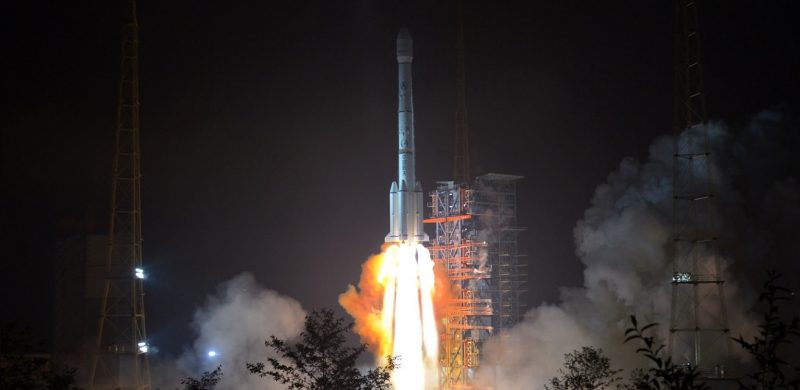Lift Off (Time) (Window)
|
March 9, 2020 – 11:50:00 UTC | 19:50:00 CST |
|---|---|
Mission Name and what it is |
Beidou-3 G2, part of the BeiDou Navigation Satellite System (BDS) |
Launch Provider
|
China Aerospace Science and Technology Corporation (CASC) |
Customer
|
BDS operated by the Chinese National Space Agency (CNSA) |
Rocket |
Long March 3B |
Launch Location |
Launch Complex -2 (LC-2) Xichang Satellite Launch Center (XSLC) People’s Republic of China |
Payload mass |
4,600 kg (10,141 pounds) |
Where are the satellites going? |
Geosynchronous Earth Orbit |
Will they be attempting to recover the first stage? |
No this is not a capability of the Long March 3B rocket |
Where will the first stage land? |
It will crash into land somewhere in China |
Will they be attempting to recover the fairings? |
No this is not a capability of the Long March 3B rocket |
Are these fairings new? |
Yes |
This will be the: |
|
Where to watch |
CASC does not live stream their launches. |
What’s all this mean?
China is sending the BeiDou 3 G2 satellite on the second-last flight of the BeiDou Navigation Satellite System 3 (BDS) this March. BeiDou 3 G2 will enter into a geosynchronous orbit on a Long March 3B rocket. This will continue to build the BDS global constellation. Similar to the Global Positioning System (GPS) or the Galileo Satellites, the BDS is another satellite constellation that provides users with positioning data.
Long March 3B
Let’s start off by talking about the Long March 3B rocket and exactly how it works. The Long March 3B rocket is one of many rockets in the Long March family that consists of three stages plus four strap on liquid fueled boosters. First off, fuel: the boosters, first stage, and second stage all use dinitrogen tetroxide (N2O4) and unsymmetrical dimethylhydrazine (UDMH). The third stage uses liquid oxygen (LOX) and liquid hydrogen (LH2). Each stage uses a different engine that is built by the Chinese and for the best performance during its section of flight.
The overall Long March 3B rocket is about 55 meters tall and has the ability to launch satellites ranging from 5100 kg to 5500 kg to geostationary transfer orbit (GTO). It’s main dedication is to launch much heavier communications satellites to a geostationary orbit.
Scheduled for a March launch, BeiDou 3 G2’s rocket was transported to the Xichang Satellite Launch Center (XSLC) on February 14, 2020. According to China Post, it is undergoing final inspections as of late February.
What about the payload?
BeiDou 3 G2
BeiDou 3 G2 is part of an ambitious satellite program to create a new Chinese-based navigation satellite constellation. When completed this June, BDS-3 will contain 30 satellites.
BDS-3 can provide global users with positioning, navigation and timing, global short message communication, and international search and rescue services. It offers users in China and surrounding areas with regional short message communication, satellite-based augmentation, ground augmentation and precise point positioning services, etc.
The system includes three orbital tracks: Geostationary Earth Orbit (GEO), Inclined Geo- Synchronous Orbit (IGSO) and Medium Earth Orbit (MEO). Most BDS satellites are in the MEO category. These 25 satellites serve as the core. That section was completed this year when the final BeiDou 3 MEO satellites were commissioned. BeiDou 3 G2 will be one of the few BDS satellites in GEO.





